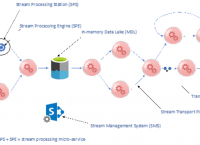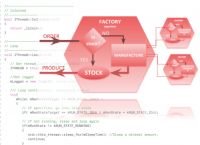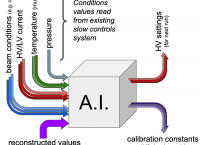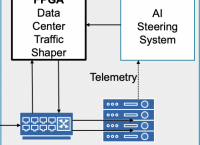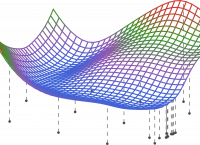Streaming Readout Data Acquisition (SRO) systems are being used in next generation experiments to allow higher statistics with more complex event identification than could be done ever before. The EPSCI group works closely with the Fast Electronics Group to develop SRO systems and software tools to support such systems. The Environment for Real-time Streaming, Acquisition, and Processing (ERSAP) is being developed within EPSCI as the backend software used to manage multiple SRO streams and process the data in real time. You can learn more about ERSAP here.
EPSCI has extensive experience in developing software for large scale Nuclear Physics experiment. These include the CLARA and JANA frameworks for multi-threaded event processing. Software development in Java, C++, Python and other languages are all used to apply the appropriate software tools to the job. You can learn more about JANA2 here and more about CLARA here.
Artificial Intelligence and Machine Learning are very important and exciting fields that are rapidly being developed for applications in all areas of science today. EPSCI works to bring this technology to the Experimental Nuclear Physics program at Jefferson Lab. Under a grant from the DOE NP LAB-2261-20 program, EPSCI is leading the AI for Experiment Calibration and Controls (AIEC) project. The goal is use AI to predict detector calibrations using information available from the experiment conditions and environment to adjust the controls in order to reduce or eliminate the need for calibration later. More information on the AIEC project can be found here.
Hydra is an AI-enabled Data Quality Monitoring(DQM) system for experimental data. It provides tools to easily label large sets of plot images and then train an AI/ML model to classify new images. It maintains a database of models and the images for which they are trained as well as model inference results for new images.The main goal is to replace the need for scientists to constantly watch the DQM plots while the experiment is ongoing. Hydra is able to look at plots that were designed for humans. It will classify plots (e.g. "good", "bad", "cosmic", ...) with the detector expert's eye. Find more info here.
The ESnet/JLab FPGA Accelerated Transport project is being developed by a collaboration between ESnet and JLab via funding from the DOE Advanced Scientific Computing Research program. The proof-of-concept project is to develop a system that includes a dynamic Compute Work Load Balancer for streamed data processing with real time feedback using a FPGA for fixed latency and high throughput. A goal is to demonstrate seamless integration of edge / core computing to support direct experimental data processing. The system is designed to enable AI/ML driven steering of data into a computing facility. This is of immediate use for JLab science programs and others such as the EIC. The EJFAT project is targeting near future projects requiring this type of high throughput. You can learn more about EJFAT here.
Surrogate Models are used in AI to replace or mimic algorithms which may be very computationally complex and therefore expensive to run. With funding provided by the JLab LDRD Program, EPSCI is working on a project to automate this process for arbitrary code. The goal is to develop a set of tools that can be used to replace expensive subroutine stacks in existing codes with AI/ML models that can be offloaded to heterogeneous hardware. This will allow utilization of heterogeneous hardware like GPUs and FPGAs without needed to rewrite each individual algorithm for that specific hardware. It may also provide code authors in the future to focus more on correctness without having to simultaneously optimize for computational efficiency. You can learn more about the AISM project here.



